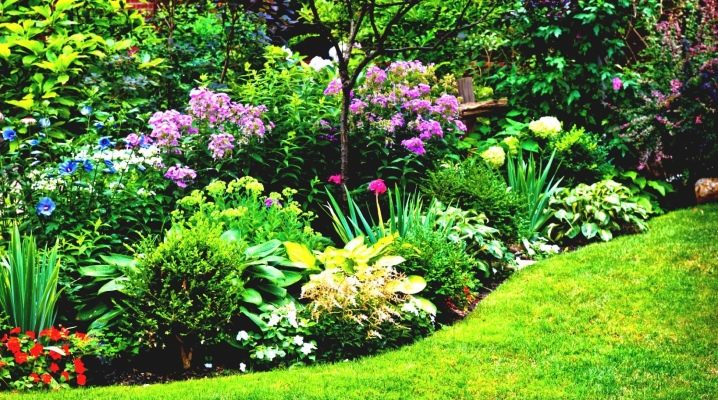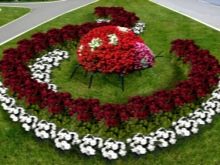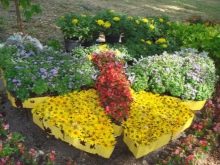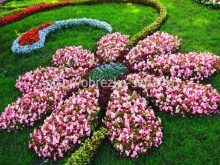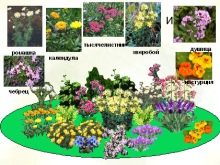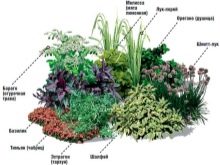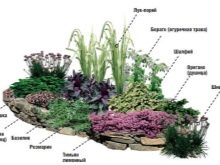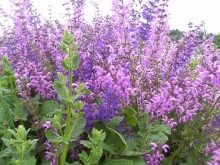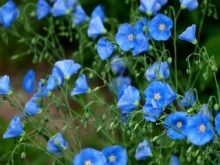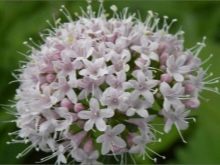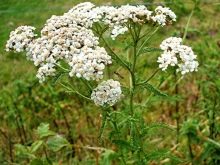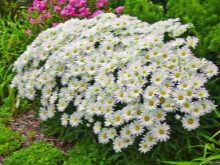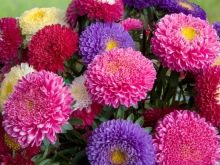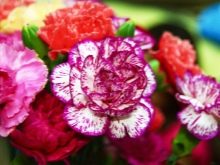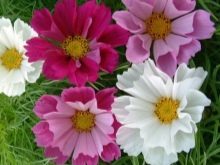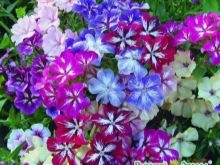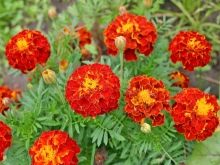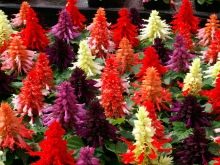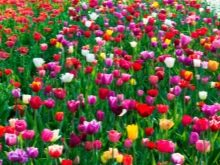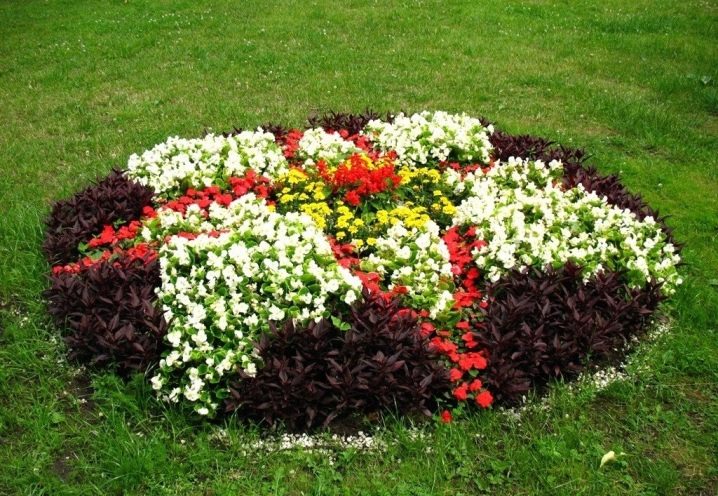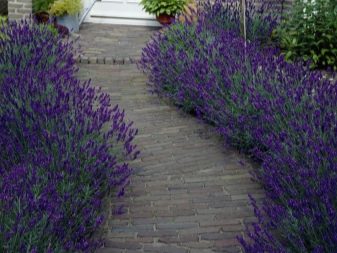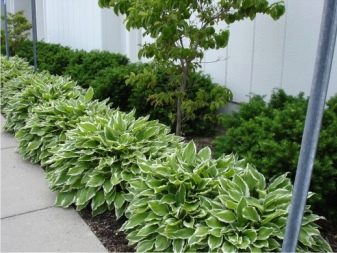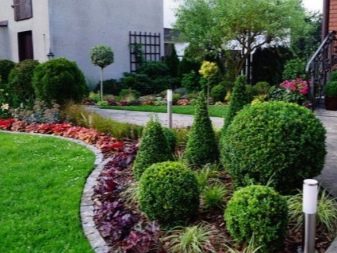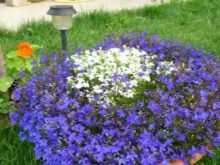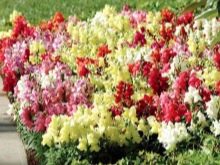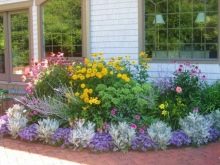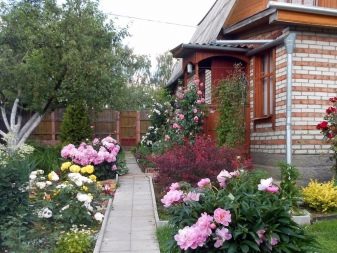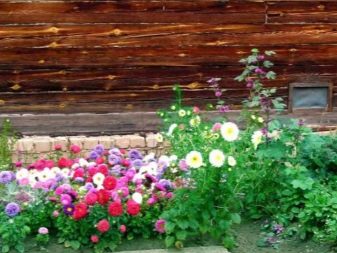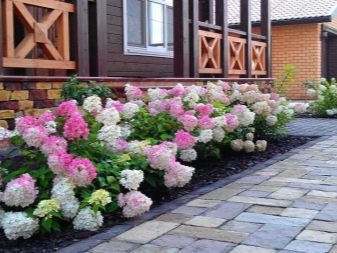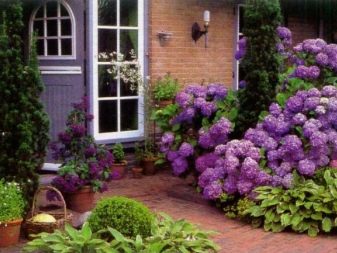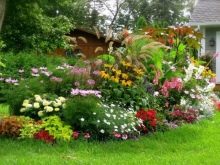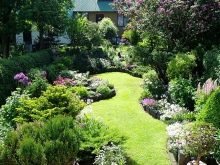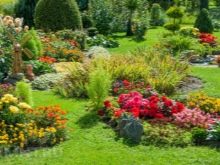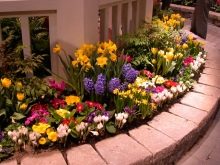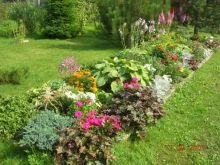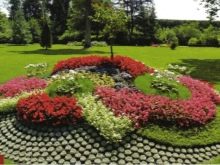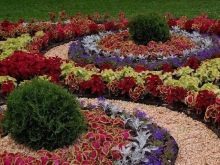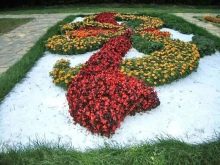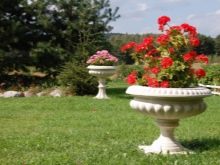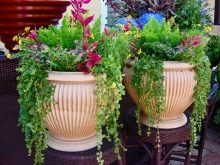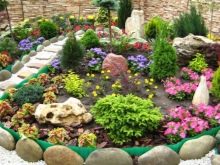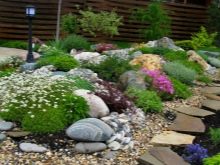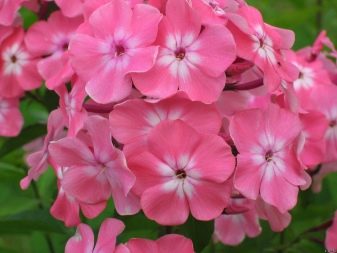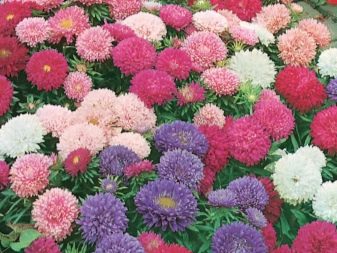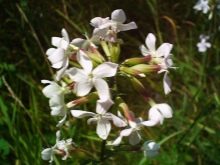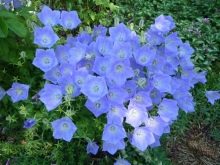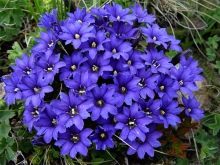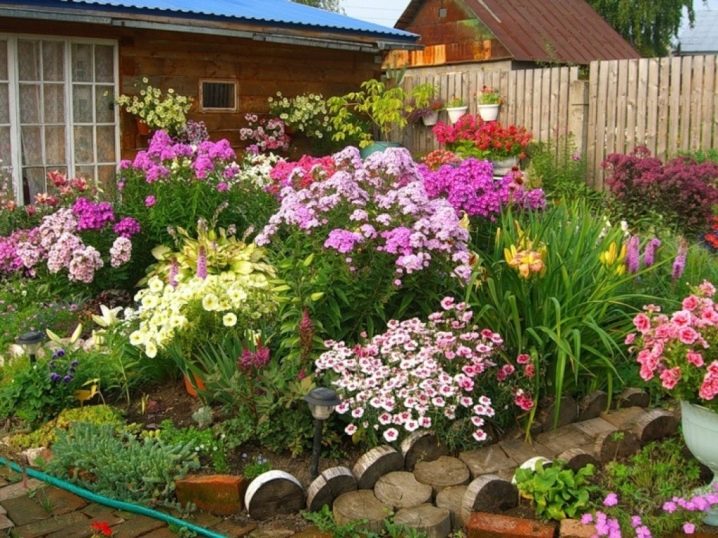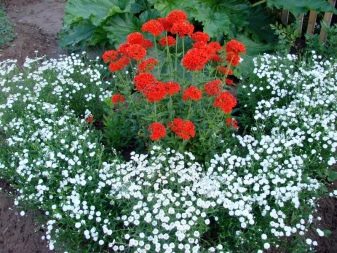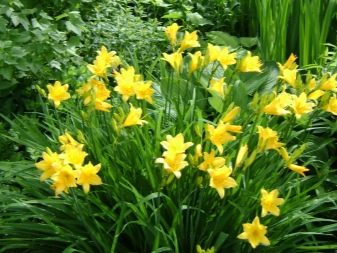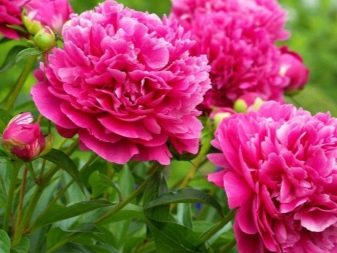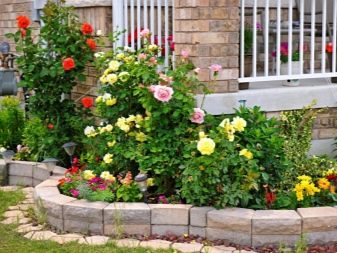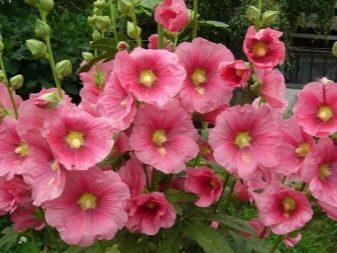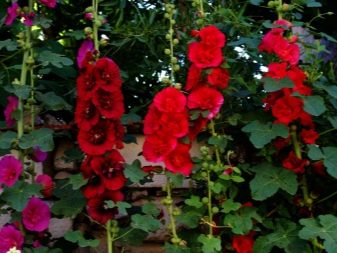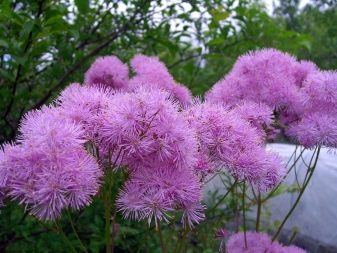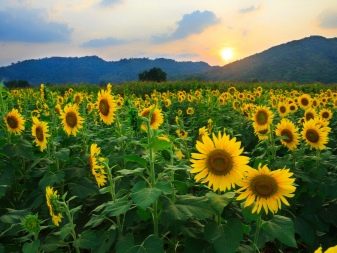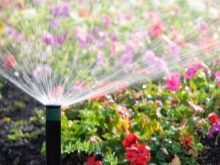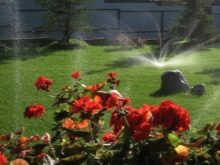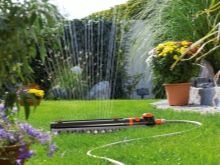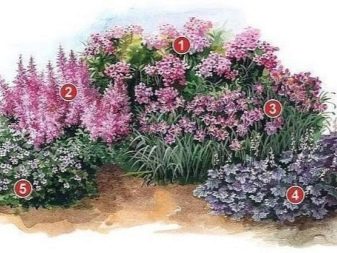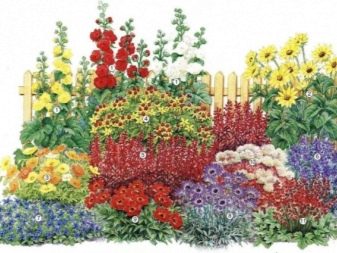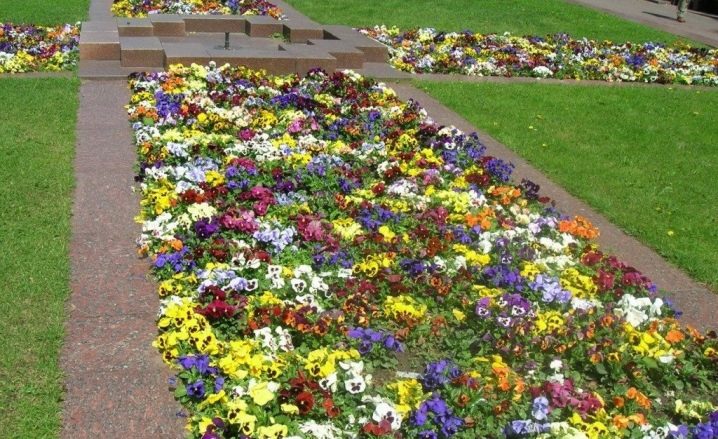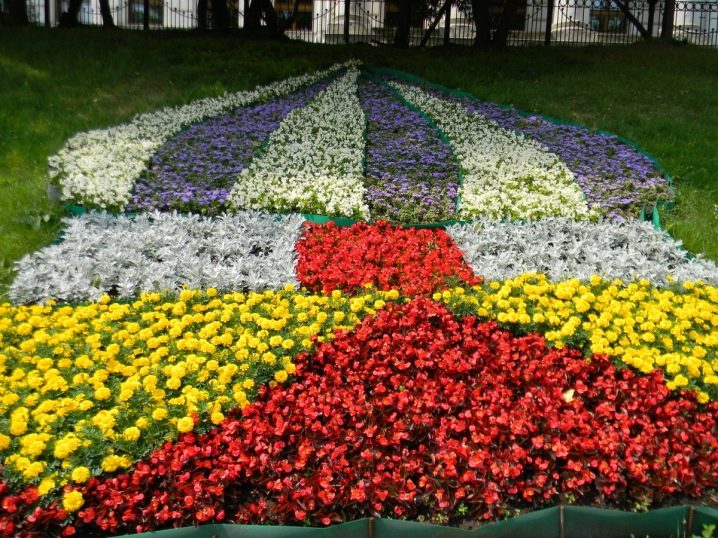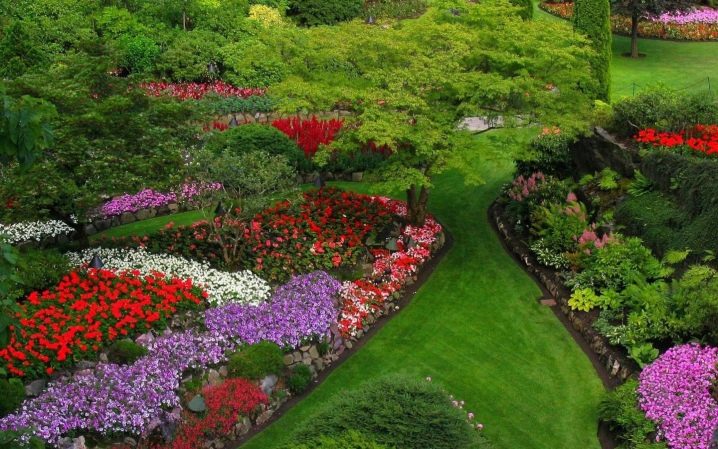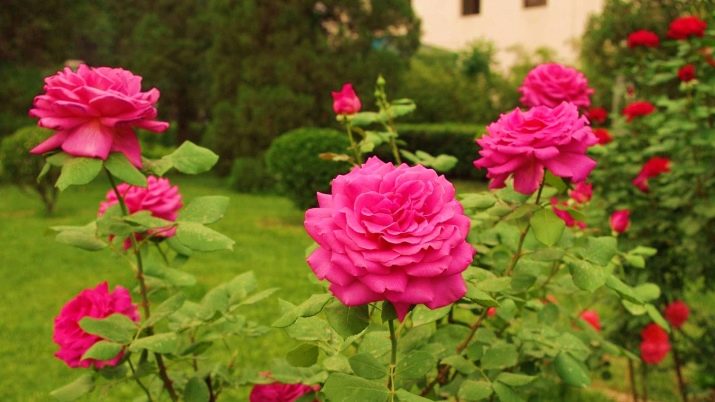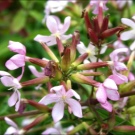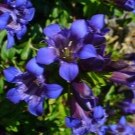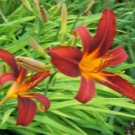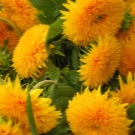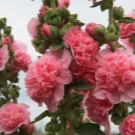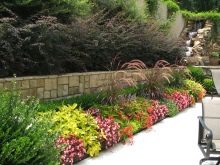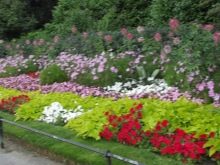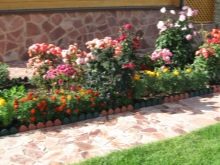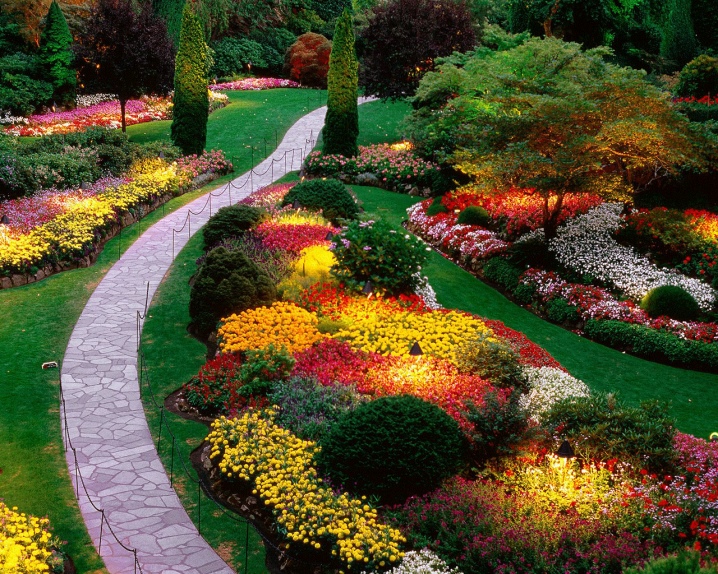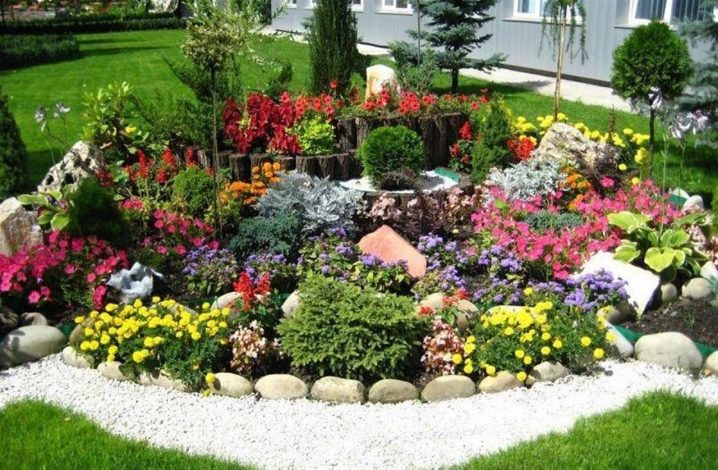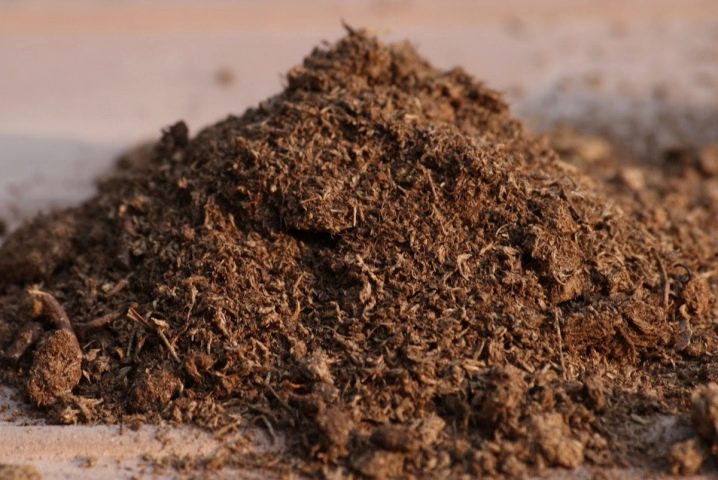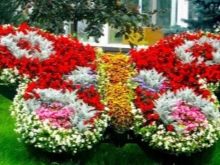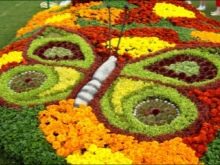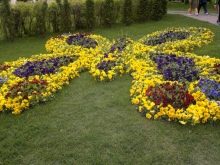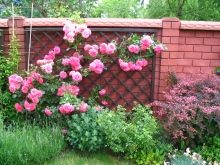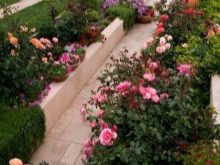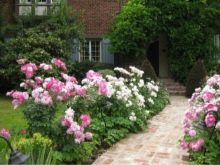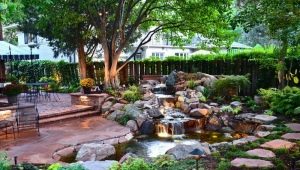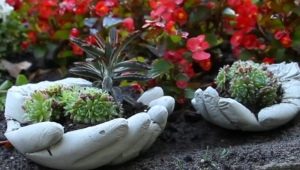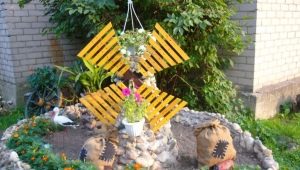Beautiful beds of perennials in landscape design: how to create your own hands
Flowerbed, blooming all year round, is the dream of every gardener. Flower beds of perennials will please the eye every season. The flowering process is resumed every year, for the gardener to do this, you just need to water, prune and feed the plants.
Special features
Perennial flower beds have many advantages that are valued among gardeners:
- a huge selection of colors, which allows you to make the original flower beds
- long live In perennials, only the top dies, and the roots of some plants can live up to 6 years;
- such flowers multiply by rhizomes, processes or seeds, so that in the future they can be planted in other beds and make flower beds;
- Perennial plants are often medicinal plants, so in the country you can make your own "green" pharmacy.
Making a blooming flower bed is a kind of art in its own way, because even at the project stage it is necessary to take into account the appearance of a flower garden at different times of the year.
A well-thought-out flower garden is a flower bed of constant flowering, when flowering plants are replaced with new ones, and this scheme “works” the whole season.
When thinking about the design of the flower bed, consider the following nuances:
- climate - choose those plants that will grow well in the climatic conditions of your region;
- features of the territory - use the terrain, so you can properly distribute the space on the site, as well as beautifully arrange a flower bed;
- soil features - note that soil type plays an important role in the selection of plants. So, for example, on fertile soil, lupins, mallows, and bluebells will feel good. Loam, sand, and stony soil are a sign that flax, valerian, and sage will be taken at such a site.
- Astra, nivyanik, yarrow should be chosen for marshy soil.
- . The over-dried land is suitable for phlox, kosmei and carnations;
- lighting area. Plants that love the sun, can not grow in the shade, so do not forget to take into account the illumination of the territory;
- planting density and timing of flowering.Do not plant plants too close, as they will interfere with each other to grow normally.
Creating flower beds is not a job for the lazy, because both perennials and annuals need to be courted. But the result will undoubtedly please you.
Types of flower beds
There are flower beds replaceable and permanent. The first ones need careful care, as a rule, they consist of annual plants, and when they bloom, seedlings of late-flowering varieties take their place. For example, tulips change to marigolds or salvia.
Properly designed permanent flower garden will delight your eyes at any time of the year. Bright flowers are perfectly combined with leaves, plant forms. Some fade away, and in their stead others bloom. If you prefer white flowers, do not forget to dilute them with bright views, so that everything in the garden is not monophonic.
But it is rather difficult to arrange a flower garden by yourself; for this you need to know all the characteristics of plants, their conditions of growth and flowering, and also carefully study the descriptions of each type of flower garden. The types of flower beds include the following:
- border - This is a small strip of low-growing varieties.Borders are planted near the paths, in places where it is necessary to establish boundaries. These flower beds should not be too bright, but they may have different shades. Creating a border involves planting flowers of one or two varieties, flowering or decorative leafy - lobariya, geykhera, host, and lavender;
- flower bed - This is exactly the kind of flower garden you can see on most parts of the middle lane It is characterized by clear forms with an original ornament. They have flowerbeds so that they are visible from different sides. Flowers are placed symmetrically - round forms, rows, sectors. Often the center of the composition rises higher, and low-growing plants are planted along the edges. For flower beds are flowers - lobelia, ageratum, antirrinum;
- front garden - the area separating the house from the road. As a rule, it is planted with lush bushes and early spring bulbous and one-year plants. A prerequisite: the front garden should be nice to look both from the street and from the windows of the house. In this case, used peonies, hydrangeas, lilac, asters;
- mixborder - This is a flower garden, which is distinguished by the fact that representatives of the flora are not planted in a row.Flora is arranged in groups, spots or separately. Such a tiered design is appropriate for the landscape planning of the garden. Mixborder consists of plants that bloom in different seasons. Due to the large variety of colors, the mixborder will shine with bright colors from spring to autumn;
- rabatka - flat planting of flowers along paths or houses. Its width is from 40 to 50 cm, the length can be different. High plants have in the middle, and at the edges stunted. For ravatok planted balsam, Godetia, calendula, verbena, purslane and other flowers;
- arabesques- These are low-growing varieties of flora, planted with original geometric shapes. They are made not only from flowers, but also from stones, gravel, small pebbles. These flower beds are central to the garden;
- vases - suitable for growing elegant annuals in combination with climbing plants. Flowerpots have on platforms, terraces and courtyards, they can be transferred to another place;
- rock garden - This is a flower garden with artificial mountainous terrain and stones. In the rock garden planted creeping perennials and bulbous varieties.Such a composition can be placed even in a small area.
When choosing colors, it is necessary to take into account all the conditions of their growth. For example, drought-resistant plants do not need to be watered often, and flowers that love the sun will feel great in the shade.
What plants fit?
Novice gardeners is quite difficult to figure out which plants to choose for perennial flower beds. All flowers from which original compositions can be made can be divided into three groups - short, medium tall and tall. Growth first, as a rule, not higher than 30 cm, and they can be used for multi-colored carpets. This group consists of flowers such as dwarf aster, phlox, gentian, soapworm, Carpathian bell.
Ephedra in the first group are not used. When planting stunted plants, consider the following nuances:
- do not place them in the shade, otherwise they will not bloom magnificently;
- plant plants tightly;
- time to destroy weeds, they not only spoil the appearance of the flower garden, but also adversely affect the growth of plants;
- Do not use nitrogen fertilizers, but floral fertilizers. The first ones are suitable for evergreens and have a good effect on leaf splendor, while the latter increase the number of flowers on a plant.
The height of sredneroslye plants ranges from 30 to 80 cm. They are ideal for those who want to decorate the landscape with island or mono-compositions. Among the plants of this group are the following names - daylily, peony, roses, yarrow.
For continuous flowering plants should be planted in the right combination, so that one followed by another.
And finally, tall plants, whose height is above 80 cm. They are an indispensable element of a luxurious island flower bed. These plants include mallow, stock-rose, basil, sinuous sunflower.
How to plant?
A perennial flower garden is not scattered around the plant. It is necessary to carefully consider the scheme, take into account all the requirements and, of course, care for the flowers.
Consider the advice of experts:
- tall plants should be located in the middle, and short at the edges. Due to this arrangement, large flowers will not close small ones;
- when making a multi-colored flower garden both on a slope and on a flat plot, a combination of bright tall and light short-growing varieties will look great;
- plant tall plants along the curb or fence, and short plants after them. A strip of long flowers will effectively decorate the border, and the next strip of low plants will complete the composition. It is appropriate to use the hosts, who are famous for their magnificent leaves of the original form;
- Carefully care for flowers. If the flowers need a different watering system, they should either be arranged according to a similar principle, or they should have patience and monitor each specimen;
- If you want to plant seasonal flowers, do not place them in front. After withering, they will spoil the appearance of the flower bed. It is better for them to allocate a place next to lush plants that will hide a faded plant species.
Modern flower beds are often decorated with coniferous plants that will look beautiful in any season.
Scheme
To create a living carpet on the site, you will need a scheme and stunted flowers. It is thanks to these plants will get the effect of the volume of bright pattern.
Experts recommend choosing flowers of the same type so that there are no elements on the carpet that differ in size or unusual shapes. Please note that bloom should be thick, so that was not visible gaps.
It’s not difficult to create a flower-shaped composition with your own hands. For this you need phlox and aquilegia. Plant white phloxes on the edge; purple and pink phloxes will project in the form of flower petals. In the middle of the composition will look great yellow aquilegia. The lush flowers of phlox will perfectly close the earth and create a voluminous picture.
Effectively in the country look flower beds of perennials - undersized or sredneroslye plants.
Tall plants are not recommended, as the drawing can be viewed only from a height. It is easy to make the song "heart." The contours of the picture made of pions, which are popular due to its pomp and brightness. Inside, the space can be filled with luxurious roses.
In the choice of shades you can give preference to pink tones. Popular are compositions in the form of islands, which do not need clarity, constant care, and their creation does not require much time. Such beds can be made monochrome or multi-color.
The second solution will be appropriate for those who love bright colors and want to make the garden plot original.
Flowerbed-island includes plants of different heights. So, for example, in the left part of the composition you will land short, bright perennials - soapworm. On the right, position the gentian. On the right in the middle the daylily bushes will also look good, and in between place several rose bushes. Fill the left-hand side of the composition with stem-roses. And on the remaining space will look great decorative sunflower.
Curb beds in the country will be the pride of his master. Among the following schemes, you can choose the one that will be to your liking:
- “Sky in the clouds” - place the Carpathian bell and gentian along the border, fill the second row with white phloxes;
- "The beauty of pink" - in a row in any order, land obriyat and soapy;
- “Royal” - the combination of yellow roses and the Carpathian bell looks really luxurious;
- “Brightness and tenderness” - in the 1 and 3 rows plant a yarrow, and fill the space between them with a daylily;
- “Extraordinary” - place purple aquilegia along the border, followed by purple phloxes.
Such original flower beds will delight their owner with bright colors, and cause delight in all guests, relatives and passersby.
Tips and tricks
In order to create a luxurious garden at a country house or a country site, you should follow the recommendations of experienced gardeners. Gardeners with experience advise "teapots":
- creating a flower garden, in no case be afraid to experiment and choose complex shapes;
- planting tall and stunted perennials is best in the ranks;
- choose flowers that bloom magnificently and brightly so that your garden “lives” from spring to late autumn;
- in a flower bed, place plants with unusual multi-colored leaves. Such beautiful ornamental plant as purslane always looks beautiful;
- plant 2–3 identical plants so that when they grow they create the effect of movement;
- mix shades, textures and shapes of plants. You can divide the territory into zones and create different compositions on them. Make a penumbra at the site, so that you feel comfortable there.
If any bloom did not suit you, do not despair. You can update your flower bed, remove what you do not like and plant other representatives of the flora.
The design and design of flower beds - is not easy, but very interesting. Feel like a real wizard, creating a paradise on your site, regardless of its size.
To design a flower bed you need to carefully prepare, or rather pay attention to the soil where the plants will be planted. The preparatory work includes:
- cleaning stones, leaves and debris;
- destruction of beetles and other pests;
- Digging the site at 50 cm in depth;
- weed elimination.
There are several types of soil, and each requires care in accordance with its characteristics. To fertilize clay soil, fertilize it with peat, humus, sand and organic matter.
Also make a drainage layer. The bottom of the sandy soil is lined with humus, manure, peat and organic fertilizers, having a 10-centimeter layer. Ready soil should be 10–15 cm above ground level.
Beautiful examples
For example, a flower garden in the shape of a butterfly has a rectangular shape, and green grass is planted in the corners. The central part is occupied by the torso, head and wings of a butterfly. The borders of the wings are planted with plants of the same variety, the rest of the space is filled with motley flowers and miniature bushes.
To make this composition even more interesting, give it a volume. Make the butterfly head higher by raising the ground level below it.
Hinged flower bridge - such a composition will not remain without attention of all who see it. The plan for the creation of this design in the first place puts the manufacture and installation of a curved frame. The best solution is the construction of a stepped structure made of wood with sides on the borders. The bridge is filled with fertile soil, on which small flowers are planted. To make such a bridge is quite difficult, but the result will be unsurpassed.
Often on the sites you can find rosaries, which are created from luxurious roses of different shades. These plants bloom best in a well-lit area, but note that it should be protected from drafts. Ideal when the rose garden is located on the south side of the garden, surrounded by deciduous trees on three sidesbut they should not shade the flower garden. It is appropriate to complement the rose garden with other colors, less vivid, they will give the composition of completeness.
Do not forget that roses are very capricious, they require special care, but the result will be worth the effort.
To create a beautiful flower garden according to the scheme is not as difficult as it seems at first glance.The main rule is not to hurry, to take into account the peculiarities of the soil and plants, as well as the climatic conditions in which the flora will flourish and be dazzled with bright colors.
Beautiful beds of perennials in landscape design is a great opportunity to make a paradise for relaxation in your own garden. After making a flower bed, do not forget to care for plants, otherwise their appearance will not be the best.
The main advantage of the flower garden is the total unlimited form. With improvised means you can create different compositions, add to the flowerbeds, improving them. How to make your site is an individual decision, but on the Internet you can find a lot of original ideas.
How beautifully it is possible to issue a flower bed, look in the following video.
